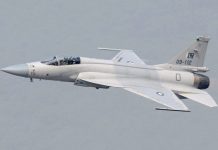By Ali Imran
ISLAMABAD: In a bid to streamline expenditure and curb burgeoning costs, the Pakistan Muslim League-Nawaz (PML-N) government has announced the formation of a new committee, aimed at re-ducing the size of government and also rationalise the expenditure on pensions and development, in a move that covers hardly 16% of this year’s budget and may not result into any major savings.
Prime Minister Shehbaz Sharif, however, notably excluded the defence budget and interest payments from the committee’s purview, which together account for around two-thirds of the federal budget.
Comprising four bureaucrats and three independent experts, including economist Dr Kaiser Bengali, a longstanding advocate for reducing non-combatant military spending and closure of cantonments, the committee has been given a one-week deadline to propose measures for cutting federal expenditure.
The committee has the mandate to review the pension schemes — an issue that is also now figuring on the agenda of the International Monetary Fund. The IMF has listed the wage and pension bill of the government as an outstanding issue for discussions during its March 14-18 review talks. The National Assembly had approved the Rs14.4 trillion budget for this fiscal year. Out of this sum, the lion’s share but still understated Rs7.3 trillion was allocated for interest payments and another Rs1.8 trillion for defence spending, excluding special programmes.
Deputy Chairman of the Planning Commission, Dr Jehanzeb Khan, will chair the committee, joined by government representatives including the Secretaries of Cabinet and Finance Divisions, and industry expert Rashid Mahmood Langrial.
From the private sector, Dr Kaiser Bengali, economist Dr Farrukh Saleem, and Naveed Iftikhar are appointed members.
The committee’s ambit extends to assessing previous reports, including those from the National Aus-terity Committee and the Institutional Reforms Committee, aiming to rationalise the federal govern-ment’s size and functions.
Despite the devolution of subjects to provinces, numerous federal ministries persist, prompting the committee to evaluate progress in downsizing. A comprehensive strategy and timeline for remaining recommendations are expected as part of the committee’s mandate.
The government has allocated Rs714 billion for running the civil government in the budget— a sum that is less than 5% of the total budget.
The committee has been tasked to make recommendations related to the Public Sector Development Programme and the pension schemes. For this fiscal year, the National Assembly allocated Rs900 bil-lion for the development and Rs801 billion for the pensions.
Out of Rs801 billion, the cost of military pensions is Rs563 billion or 70% of the allocation for the pen-sions.
The exclusion of the defence budget and the interest payments from the scope of the committee has left little space for making any meaningful impact.
The finance ministry last month upwardly revised the budget deficit target to Rs8.5 trillion, primarily because of an increase in estimates of interest payments during this fiscal year. Interest expenses have now been estimated at Rs8.333 trillion, compared to the annual allocation of Rs7.3 trillion.
Pakistan needs debt restructuring and sharp cuts in the interest rates by the central bank to make no-ticeable cuts in expenditure.
During the first seven months of this fiscal year, the government spent Rs4.66 trillion on interest pay-ments, a sum that was more than the federal government’s net income during this period.
Past austerity policies have not helped achieve fiscal consolidation, often being relaxed after their ap-proval. The former Caretaker Prime Minister Anwaarul Haq Kakar had also approved new fiscal austeri-ty measures, including a ban on creating new positions and major purchases.
The government has already placed a complete ban on creating new posts under the Public Sector De-velopment Programme (PSDP) and the current budget for the fiscal year 2023-24.
There has already been a ban on the purchase of all vehicles except for ambulances, buses for educa-tional institutions, solid waste vehicles, tractors, fire-fighting vehicles, and motorbikes, according to the decision.




